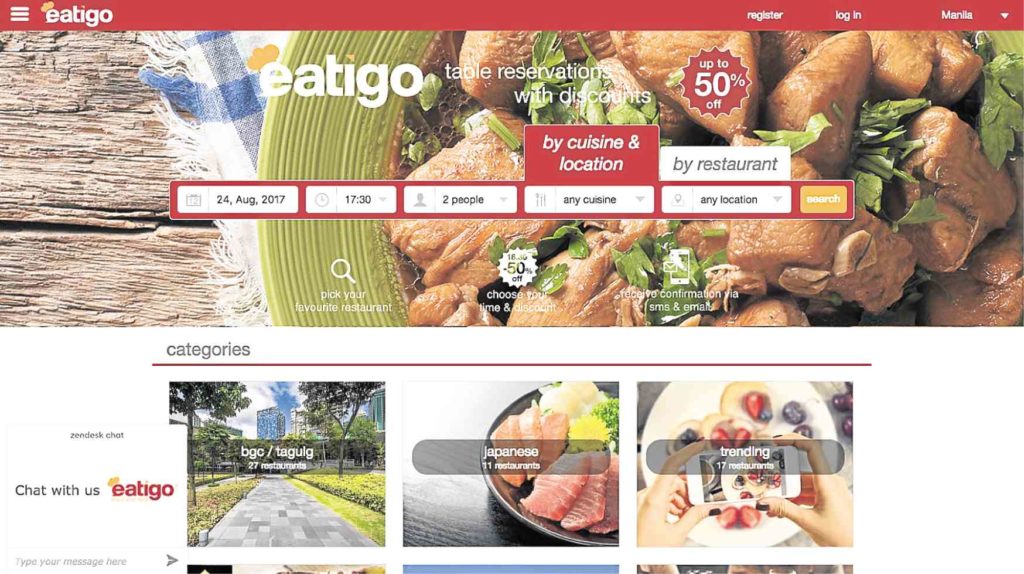Capacity utilization and yield management.
Four years ago, these two business concepts led to the creation of Eatigo, an online restaurant reservation platform which, in a nutshell, “connects empty stomachs to empty tables” using time-based discounts.
The idea was inspired in the company’s CEO and co-founder, Michael Cluzel, after he saw a presentation on capacity utilization for hotels and airlines.
“That was my aha! moment, because I saw that hotels and airlines run at about 80 percent capacity utilization globally, but restaurants run at around 30 percent,” Cluzel says. “Why are these two other industries so efficient? The answer is yield management: Charging different prices to different people at different times for the exact same thing. Hotel room prices change all the time; airfare prices change all the time. But in the restaurants, the prices somehow all stay the same.”
With that in mind, Cluzel, who had experience working in the food and beverage industry, along with his team, set out to solve that apparent problem among restaurants.
“The insight behind Eatigo is that an empty table is a perishable good—just like an empty seat in an airline—because every hour that goes by, a table that is not filled contributes exactly zero to your fixed costs, [such as] your rent, staff cost, electricity,” Cluzel says. “The value proposition is, let me take this table that’s empty with zero-percent profitability, and replace it with a table that is filled, with a guaranteed, positive profitability, to make sure that our merchants have incremental profits to what they’re currently earning.”
Since its initial launch in Thailand and Singapore, Eatigo has aggressively launched in four new markets just this year: Malaysia, Hong Kong, India, and here in the Philippines. Across all markets, over 2,000 restaurants are now on the platform. All restaurants offer discounts all day, every day, which change depending on the time one books a reservation either through the Eatigo website or mobile app.
The minimum discount offered is 10 percent; during lean hours, it can go as high as 50 percent, to attract more traffic to these establishments. To make the user experience as seamless as possible, customers are charged the discount when they ask for their restaurant bill, Cluzel explains. Merchants, on the other hand, are charged by Eatigo a fee per diner seated.
As to the kinds of restaurants available on the platform Cluzel says Eatigo doesn’t discriminate, as partner merchants range from hole-in-the-wall burger joints to Michelin-starred establishments.
“Eatigo is not aiming to have 20,000 restaurants. We’re not a review site. It’s about having the right restaurant, because if I have too many restaurants, the bookings I can send per restaurant will not be very significant. But if I have a curated number of restaurants that give users a good choice, that cover the localities and the cuisine available, I can make sure that for every restaurant, I am meaningful,” he adds.
With already 200 Metro Manila restaurants available on Eatigo, Cluzel says the company’s Philippine launch “has been beyond our wildest forecast.”
“The user acceptance is very good. We went to the No. 1 spot of both app stores of iOs and Android,” he says. “Filipino users have taken to it very well; it’s one of the strongest launches we’ve ever had.”
Cluzel chalks it up to the country’s strong food and dining out culture, as well as Filipinos’ affinity for discounts.


